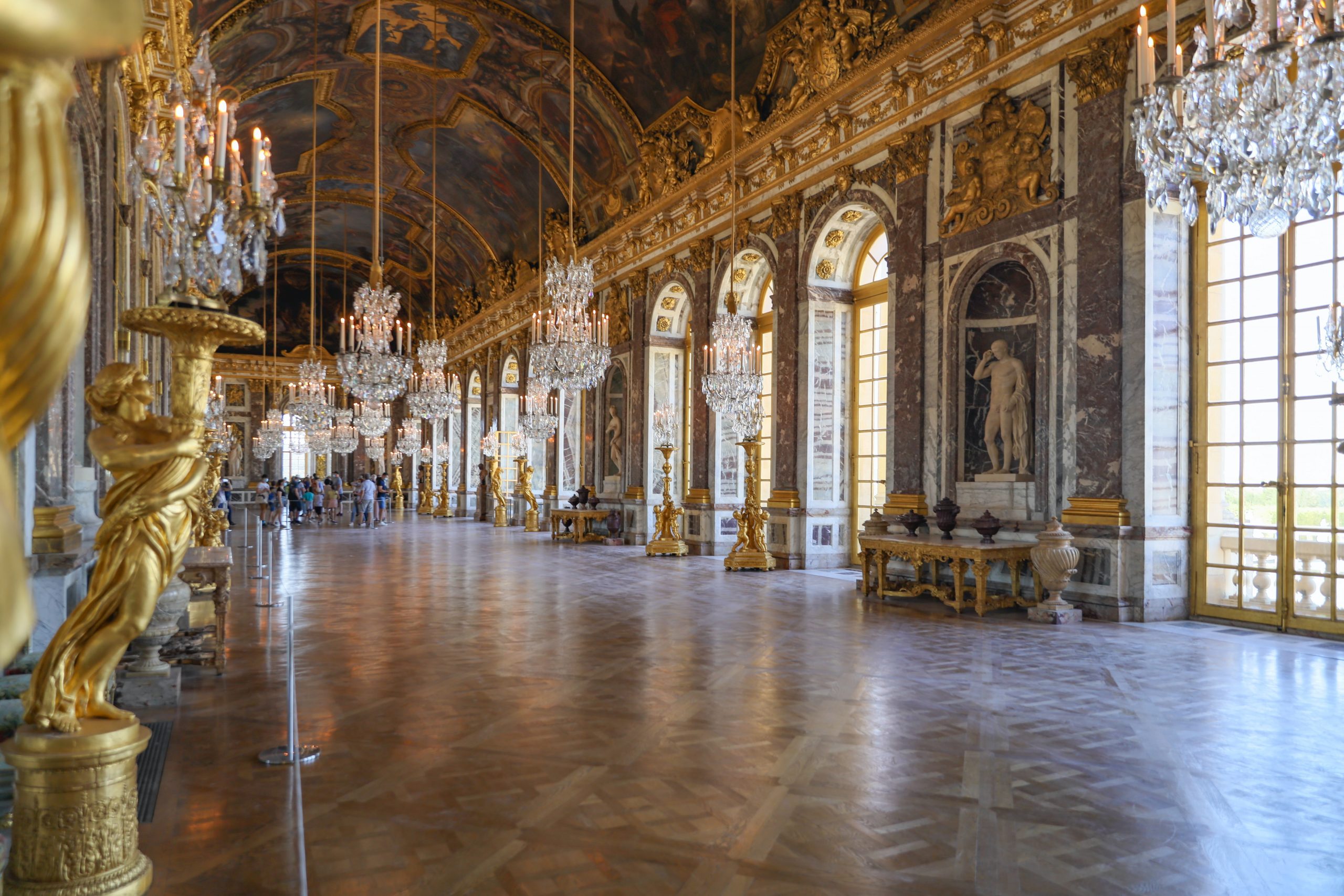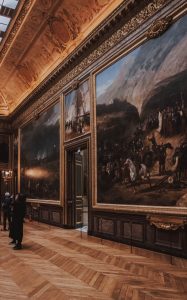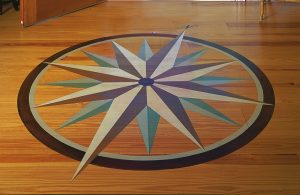The History of Hardwood Flooring
January 26, 2021
When you think of a timeless home, chances are the image in your head will have hardwood floors. Hardwoods have long been favored for their appearance and ability to stand the test of time. Sometimes we take traditional home design aspects for granted, but it wasn’t until the 17th century that hardwood flooring started to gain popularity.
If you’ve ever wondered how and why hardwood flooring came to be, let us walk you through the history of hardwood flooring and hardwood floor trends.
What Was Available Before Hardwood Flooring?
In the early days of human history, our ancestors did not have the luxury of choosing from a wide range of flooring options. Instead, they were limited to materials that were readily available in their local environment. As a result, early floors were often made from dirt, straw, or stone. Over time, however, new materials and technologies began to emerge. Around the same time that hardwood floors were invented, people also began to experiment with other materials such as linoleum, vinyl, and laminate.
While these materials offered some benefits over traditional hardwood floors, they also had their own drawbacks. For example, Vinyl and laminate floors were susceptible to scratching and denting, and linoleum tended to fade over time. As a result, hardwood floors quickly became the preferred choice for many homeowners. Thanks to their beauty, durability, and easy maintenance, hardwood floors remain one of the most popular flooring options on the market today.
The Early Years
The history of hardwood flooring dates back to the early 1600’s French Baroque area. At the time, only wealthy people and French nobility would have adapted this style due to cost and timeliness of the installation. Hardwood flooring was made by hand, where each plank would be scraped, sanded and polished. Examples of this type of early flooring can be seen at Versailles in the traditional Parquet wood flooring style that is still popular today.

Image courtesy of Unsplash
Hardwood Flooring in America
Most of the hardwood flooring we imagine today – polished and uniform – weren’t common until the 19th century. In fact, most flooring in early colonial America was made from wide, thick planks that were likely cut from nearby forests with whatever material they could find. Unlike today where you can choose from flooring like bamboo, hickory, oak and more, these people were working with what was right outside their door.
The process for cutting timber into lumber was also extremely lengthy and difficult. A pit saw was most commonly used to do the cutting and required at least two men to get the job done. Because the process was so manual and strenuous, the planks of wood were often different widths and sizes, resulting in uneven flooring or flooring with gaps in it. It was common to lose smaller items like marbles under the gaps in the floors.
As time went on, a new method for laying flooring was created that allowed for a much more uniform look. The long edge of a plank of wood was planed with an “L” profile, allowing it to lock in with adjacent boards. So, when wood inevitability changed shape and size due to weather, gaps could be covered up by the end of the other, adjacent board.
Early Hardwood Flooring Design Trends
Like so many aspects of design, popular hardwood flooring styles have changed drastically over the years. In the 18th century, many people began to paint their flooring as they would their walls and ceilings (staining and varnish wouldn’t become popular until the late 19th century). These decoratively painted wood floors ranged from monochrome to fanciful designs such as diamond or checkerboard patterns, making for a memorable timestamp in the history of hardwood flooring. Because of the low quality of the wood in most of the homes during this time, painting was a relatively easy and inexpensive way to upgrade the look of your home.

Colors in a hand-painted floor were cued by the original jadeite-green glass wall tiles.
Photo: Leslie Tomlin

For a compass rose, paint reproduces the look of inlaid wood species.
Photo: Sandy Agrafiotis
However, if you were a part of the wealthy elite, you might have been able to invest in parquet flooring, similar to the Versailles style mentioned earlier. Parquet comes from the French term “Parquetry”, meaning small compartment. Parquet wood flooring is made by arranging small slats of wood in repeating patterns.
Parquet flooring

Image courtesy of Unsplash
The Industrial Revolution
Along with many other inventions, the Industrial Revolution also brought a more efficient and expedited process to the hardwood flooring world. With new, steam-driven machinery, the production time of flooring decreased significantly. Additionally, flooring became much more uniform and began to look like the polished flooring we think of today.
Around this time, the most popular way to install flooring was known as the “Tongue and Groove” flooring method. Tongue and groove flooring fits together like a puzzle piece, where one part of the flooring is fitted with a protruding “tongue” that fits into a concave “groove.” The most common type of hardwood around this time was narrow, oak floors – much different from the types of flooring we saw in earlier years.
Prior to the industrial revolution, most hardwood floors were made by hand. This meant that they were time-consuming and expensive to produce. However, the industrial revolution led to the development of new machinery that could mass-produce hardwood floors. This made hardwood floors more affordable and accessible to the average consumer. In addition, the industrial revolution also led to the development of new finishes and treatments that helped to improve the durability of hardwood floors.
The industrial revolution also impacted the hardwood flooring industry in terms of its workforce. Prior to the industrial revolution, most hardwood floors were made by skilled craftsmen. However, with the development of new machines, many of these jobs became obsolete. As a result, many workers in the hardwood flooring industry lost their jobs. The industrial revolution thus had a major impact on both the efficiency and workforce of the hardwood flooring industry.

Photo: Superior Flooring
Hardwood Flooring Today
Hardwood flooring has been a favorite among homeowners for centuries, declining only in popularity during World War II when carpeting became more common. The late 19th century saw the polished hardwood floors we know today come to fruition, after many different phases of hardwood flooring.
Hardwood flooring today is put through a more rigorous manufacturing process than ever before, making for an attractive and long-lasting product. In the past, hardwood flooring was reserved for only certain rooms of the house. Nowadays, however, it is not uncommon to see hardwood floors throughout an entire home. Whether you’re looking for classic or contemporary styles, hardwood floors are a great way to add beauty and sophistication to any space.
Engineered hardwood flooring is also a popular option among homeowners, as it is more affordable and accessible than traditional hardwood floors. Engineered hardwood flooring is made of multiple layers of wood, with the top layer being real wood. The cost to install engineered hardwood flooring is much more affordable than ever with convenient prefinished hardwood floor options. This makes it more resistant to moisture and allows it to be installed in areas where traditional hardwood would not be able to go.
Whether you’re renovating a home and deciding on a type of hardwood for your style or simply considering hardwood floors in general, there’s a myriad of hardwood floor trends to choose from. If you’re on the fence, remember that hardwood flooring is a classic and timeless choice. Hardwood floors have stood the test of time for centuries and we don’t anticipate them going away any time soon.
MacDonald Hardwoods has been the go-to engineered hardwood flooring supplier in the surrounding Denver area since 1986. We know everyone has unique needs when it comes to hardwood flooring and we strive to ensure our customers are getting the best possible product for their project.






